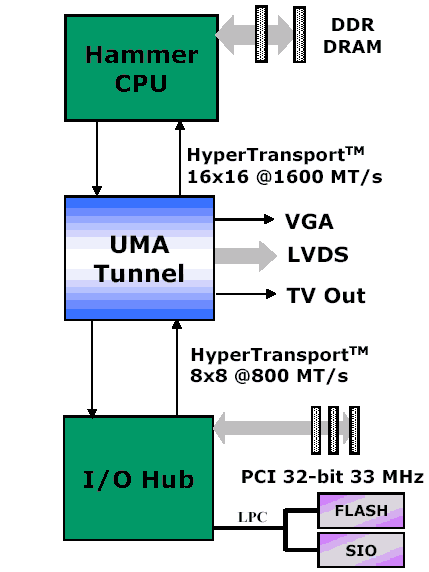Integrated Graphics Performance: It's all in the chips
Conclusion, Continued
Should you be interested in buying a pre-built PC with integrated graphics, we recommend that you judge the chip's image quality for yourself using a good monitor at a resolution of at least 1280x1024-85Hz. As we mentioned above, our reference add-in card, Connect 3D's Radeon 9200, also produced lousy image quality, so an add-in card is not automatically the better choice. Note: image quality is not necessarily decided by the chip that's used or the manufacturer. Often only a limited series of boards, be it add-in or integrated motherboards, will have problems. This makes buying these components in online stores especially problematic, since the customers have no way of testing the product before buying it.
Taking a look into our crystal ball to see what future will bring for integrated graphics chips, we can only give you the standard reply: the future is unclear. With its RS300 (Radeon 9100 IGP), ATi is about to introduce the first DirectX 8.1 capable integrated graphics chip, based on the Radeon 9000 design - see Preview: ATi Radeon 9100IGP (RS300) for Pentium 4 for more info. Whether this chip will have what it takes to compete with add-in cards remains to be seen, however.
The Integrated Graphics Tunnel in AMD's Hypertransport architecture for Hammer CPU's allows transfers with up to 6.4 GB's
We are also witnessing the integration of the memory controller into the CPUs themselves, which may create other stumbling blocks for integrated graphics in the future, since the chips will no longer be able to access the memory directly. The bandwidth of the AGP interface, which would have to be used instead, is now specified at 2.1 GB/s (AGP8x), which is a far cry from the 6.4 GB/s offered by dual channel DDR 400. Even PCI-Express won't be an alternative anytime soon - the x16 graphics interface with which it is set to debut is only specified at 4 GB/s and 8 GB/s Peak performance. AMD on the other hand already has a concept ready: The Integrated Graphics Tunnel using AMD's Hypertransport (see image above).
Getting back to our introduction, we can't help but wonder how the chipset companies will get around these problems. Maybe a tuned up HyperTransport bus will do the job? After all, in their eyes integrated graphics are the way to go - remember?
Get Tom's Hardware's best news and in-depth reviews, straight to your inbox.
